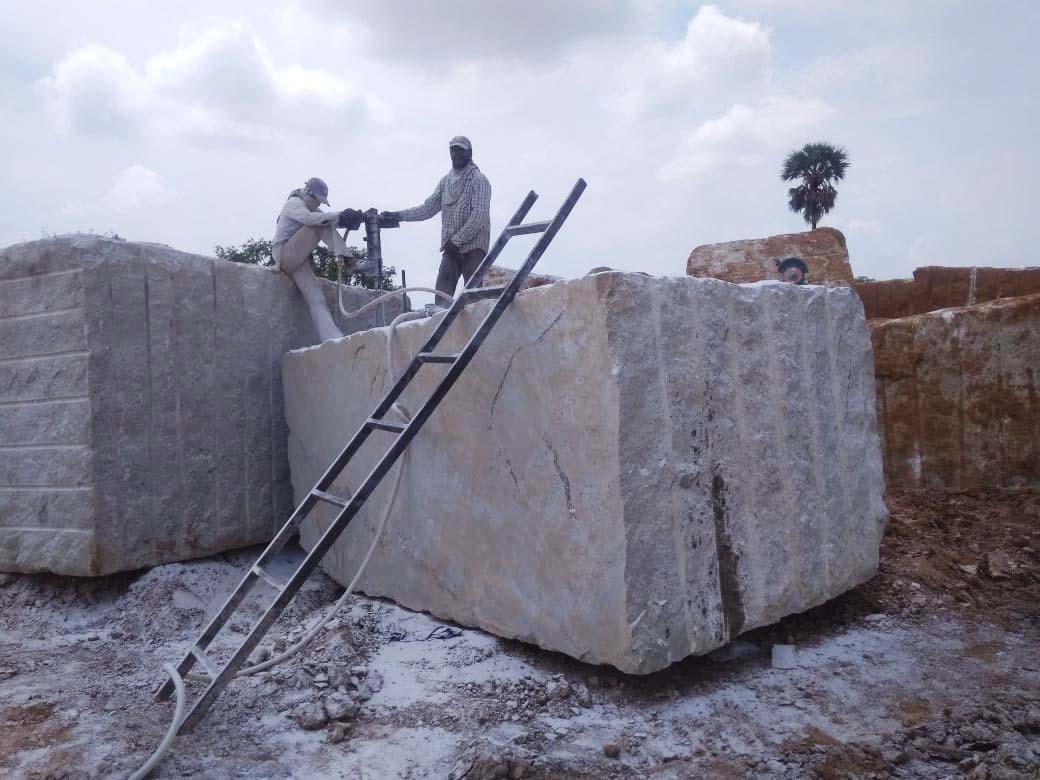Exploring Granite Quarries in South Africa: A Comprehensive Guide
Exploring Granite Quarries in South Africa: A Comprehensive Guide
Blog Article
Introducing the Mysteries of Granite Quarrying: Where Strength and Sophistication Meet
The globe of granite quarrying is a realm where the raw strength of nature assembles with human virtuosity to develop structures that stand the test of time with an air of sophistication. From the midsts of quarries to the meticulous polishing in workshops, the process of transforming granite right into building wonders is an intricate dancing of tradition and development. As we peer right into the midsts of this old craft, we start to reveal the hidden intricacies that shape the extremely essence of our developed atmosphere.
The Beginnings of Granite Quarrying
In the record of building background, the beginnings of granite quarrying are shrouded in a tapestry of old workmanship and geological wonders. Going back to ancient Egypt and Mesopotamia, the extraction of granite from quarries marked the beginning of a journey that would at some point bring about the creation of some of the globe's most legendary frameworks.
Granite quarrying's origins can be mapped to the knowledgeable craftsmens that recognized the rock's toughness and visual charm. With a combination of primitive tools and sheer resolution, these very early quarry employees discovered granite blocks that would become the foundation of human beings.
As human beings progressed, so did the methods of quarrying granite. The Romans, renowned for their engineering prowess, created innovative techniques for drawing out granite to construct monoliths, holy places, and roads that stood the test of time.
The heritage of these old quarrying practices continues to form contemporary architecture, with granite continuing to be an icon of stamina and elegance in construction tasks around the globe. (granite quarries in south africa)
Devices of the Quarrying Profession
The evolution of granite quarrying strategies from old civilizations to modern-day times highlights the important function played by the devices of the quarrying sell shaping the market's practices. In old times, quarrying tools were rudimentary, usually consisting of chisels, hammers, and wedges made from products like bronze or iron. These tools needed significant workforce and time to extract granite obstructs from quarries.

Additionally, the introduction of pneumatic devices and high-powered equipment has actually dramatically lowered the physical labor called for in quarrying procedures, improving worker security and productivity. As the quarrying industry remains to introduce, the devices of the profession stay at the leading edge of driving progression and forming the future of granite removal.
Extracting Blocks of Granite
Using precision equipment and advanced techniques, click to read the extraction of granite blocks from quarries has actually come to be a sophisticated process in the contemporary quarrying industry. The initial step involves identifying the area and dimension of the granite deposit to identify one of the most reliable removal method. Once an ideal site is selected, the removal process starts with the boring of holes for the positioning of dynamites. Controlled blowing up methods are after that utilized to break apart the granite right into workable areas.

Polishing and Ending Up Methods
To achieve a perfect surface area on granite blocks, competent craftsmens employ a series of thorough polishing and completing strategies. After the initial extraction and forming procedures, the granite blocks go through a detailed polishing phase to improve their all-natural beauty and sturdiness.
Along with sprucing up, finishing methods are put on more refine the granite's appearance. These methods might consist of flaming, sharpening, or brushing, each offering distinct structures and coatings to match various aesthetic preferences. Flaming, for example, includes subjecting the granite surface area to high temperature levels to develop a harsh, distinctive coating, suitable for outdoor applications where slip-resistance is essential. Honing, on the various other hand, gives a matte surface that is smooth her response to the touch, perfect for interior counter tops and floor covering. By thoroughly picking and applying these polishing and ending up techniques, craftsmens can change raw granite obstructs right into splendid pieces that display both toughness and elegance.

Ecological Impact and Sustainability
With the expanding emphasis on ecological awareness in the industry, granite quarrying techniques are increasingly inspected for their influence on natural deposits and long-term sustainability. Quarrying for granite can have considerable ecological implications. The extraction procedure frequently includes using heavy machinery, nitroglycerins, and large amounts of water, bring about habitat destruction, dirt disintegration, and water pollution. Furthermore, the transport of granite from quarries to refining centers generates carbon discharges, additionally adding to environmental degradation. granite quarries in south africa.
To minimize these impacts and ensure sustainability in granite quarrying, industry stakeholders are adopting various steps. Executing sophisticated modern technologies to lower power intake and water use, recovering quarried land for environmental repair, and advertising accountable sourcing methods are some techniques being utilized. Accreditations such as the Forest Stewardship Council (FSC) and the Leadership in Power and Environmental Layout (LEED) assistance consumers identify eco pleasant granite products.
Verdict
To conclude, granite quarrying is a process that calls for specialized tools and strategies to essence blocks of granite and brighten them to a high level of finish. While the ecological impact of quarrying can be considerable, efforts are being made to enhance sustainability practices in the sector. In general, granite quarrying is a fragile balance in between harnessing the toughness and beauty of this all-natural stone while lessening its impact on the atmosphere.
Report this page